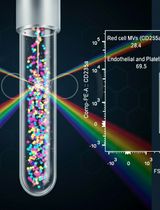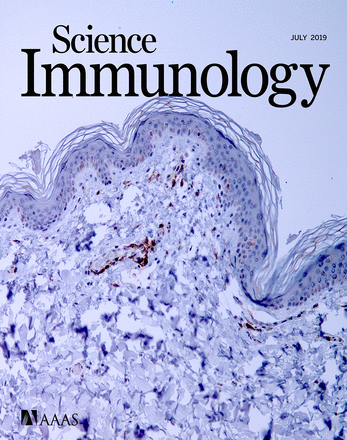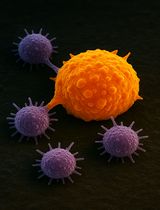- EN - English
- CN - 中文
Flow Cytometry Analysis and Fluorescence-activated Cell Sorting of Myeloid Cells from Lung and Bronchoalveolar Lavage Samples from Mycobacterium tuberculosis-infected Mice
结核分枝杆菌感染小鼠肺和支气管肺泡灌洗样品中髓样细胞的流式细胞仪分析和荧光激活细胞分选
发布: 2020年05月20日第10卷第10期 DOI: 10.21769/BioProtoc.3630 浏览次数: 7083
评审: Andrew OliveMeenal SinhaAnonymous reviewer(s)

相关实验方案

外周血中细胞外囊泡的分离与分析方法:红细胞、内皮细胞及血小板来源的细胞外囊泡
Bhawani Yasassri Alvitigala [...] Lallindra Viranjan Gooneratne
2025年11月05日 1329 阅读
Abstract
Mycobacterium tuberculosis (Mtb) is transmitted by aerosol and can cause serious bacterial infection in the lung that can be fatal if left untreated. Mtb is now the leading cause of death worldwide by an infectious agent. Characterizing the early events of in vivo infection following aerosol challenge is critical for understanding how innate immune cells respond to infection but is technically challenging due to the small number of bacteria that initially infect the lung. Previous studies either evaluated Mtb-infected cells at later stages of infection when the number of bacteria in the lung is much higher or used in vitro model systems to assess the response of myeloid cells to Mtb. Here, we describe a method that uses fluorescent bacteria, a high-dose aerosol infection model, and flow cytometry to track Mtb-infected cells in the lung immediately following aerosol infection and fluorescence-activated cell sorting (FACS) to isolate naïve, bystander, and Mtb-infected cells for downstream applications, including RNA-sequencing. This protocol provides the ability to monitor Mtb-infection and cell-specific responses within the context of the lung environment, which is known to modulate the function of both resident and recruited populations. Using this protocol, we discovered that alveolar macrophages respond to Mtb infection in vivo by up-regulating a cell protective transcriptional response that is regulated by the transcription factor Nrf2 and is detrimental to early control of the bacteria.
Keywords: Mycobacterium tuberculosis (结核分枝杆菌)Background
Aerosol transmission is a critical component of the natural cycle of Mycobacterium tuberculosis (Mtb) infection, contributing to the virulence of the bacteria and leading to a unique pattern of infection in the lung (North, 1995; Riley et al., 1995; Pai et al., 2016). In order to understand the early events of infection, it is critical to be able to track the cell types that become infected and isolate those populations for downstream analysis. Studies using a standard low-dose mouse model (~100 CFU deposition) have failed to detect bacteria earlier than 14 days following infection, a time point at which Mtb can be found distributed within alveolar macrophages, neutrophils, interstitial macrophages and dendritic cells (Wolf et al., 2007; Huang et al., 2018). By pairing a high-dose infection model with fluorescent bacteria, flow cytometry, and cell sorting techniques, this protocol enables the detection of Mtb-infected cells immediately following aerosol challenge and the ability to isolate Mtb-infected populations at different time-points as disease develops. While the high-dose infection model allows for very early detection of the first cells that are infected with Mtb and for evaluation of the early dynamics of Mtb-infected cells and bacterial dissemination, it may accelerate the adaptive stages of the immune response and disease progression compared to more commonly used low-dose models. Therefore, its utility is in studying the early stages of infection (within the first two weeks) and may not be as useful in studying later stages of disease. By combining this protocol with RNA-sequencing, we identified a cell protective transcriptional response generated by Mtb-infected alveolar macrophages that is regulated by the transcription factor Nrf2 and is detrimental to early control of the bacteria (Rothchild et al., 2019). Other downstream applications include qPCR and ex vivo functional assays to characterize both infected and bystander cells. This approach is also applicable to other pulmonary infection models.
Materials and Reagents
- 5 ml syringe (BD, catalog number: 309646 )
- 18 G x 1½ needle (BD, catalog number: 305196 )
- 15 ml conicals (VWR, catalog number: 525-1069 )
- 50 ml conicals (VWR, catalog number: 505-1074 )
- 70 μm cell strainers (Fisherbrand, catalog number: 22363548 )
- 96-well plate, U-bottom (Falcon, catalog number: 353077 )
- 1 ml Luer-Lok Tip syringes (BD, catalog number: 309628 )
- 20 gauge x 1-inch Introcan Safety IV catheter (Braun, catalog number: 4252543-02 )
- Counting Beads: Polybead Polystyrene 15.0 μm Microspheres (Polysciences, catalog number: 18328 )
- GentleMACS M Tubes (Miltenyi Biotec, catalog number: 130-093-236 )
- Middlebrook and Cohn 7H10 Agar Plates (Fisher Scientific, catalog number: B21174X )
- Mesh Nylon 23 x 23 cm (VWR, catalog number: 47746-106 )
- 5 ml Polystyrene Round-Bottom Tubes, “FACS tubes” (Corning, catalog number: 352054 )
- 5 ml Polystyrene Round-Bottom Tubes with filter caps (Corning, catalog number: 253235 )
- GentleMACS C Tubes (Miltenyi Biotec, catalog number: 130-093-237 )
- Mice: C57BL/6 (Jackson Laboratories, catalog number: 000 664 )
- Fluorescent Mtb strain: mEmerald-H37Rv (non-commercially available, H37Rv background strain available from BEI, catalog number: NR-123 , see Procedure notes below for more information)
- Hygromycin B (VWR, catalog number: 80501-072 )
- Liberase Blendzyme 3 (Sigma-Aldrich, catalog number: 5401020001 )
- DNase I (Sigma-Aldrich, catalog number: 10104159001
- RPMI (Gibco, catalog number: 11875-093 )
- FBS (Peak Serum, catalog number: PS-FB1 )
- 70% ethanol (Fisher Scientific, catalog number: 04-255-92 )
- PREempt RTU Disinfectant Solution (Contec, catalog number: 21105 )
- PBS without calcium and magnesium (Corning, catalog number: 21-040-CV )
- ACK Lysing Buffer (Gibco, catalog number: A10492-01 )
- FcBlock, anti-CD16/32 (clone 2.4G2) (BD Pharmingen, catalog number: 553141 )
- Zombie Violet Fixable Viability Kit (Biolegend, catalog number: 423113 )
- Flow cytometry antibodies (also listed in Procedure section)
- Anti-mouse Siglec F (clone E50-2440, BD Pharmingen, PE, catalog number: 552126 )
- Anti-mouse CD45.2 (clone 104, Biolegend, PerCp-Cy5.5, catalog number: 109828 )
- Anti-mouse CD64 (clone X54-5/7.1, Biolegend, APC, catalog number: 139306 )
- Anti-mouse CD3 (clone 17A2, eBioscience, APC-eFluor780, catalog number: 47-0032-82 )
- Anti-mouse CD19 (clone 1D3, eBioscience, APC-eFluor780, catalog number: 47-0193-82 )
- Anti-mouse/human CD11b (clone M1/70, Biolegend, Brilliant Violet 570, catalog number: 101233 )
- Anti-mouse I-A/I-E (MHC II) (clone M5/114.15.2, Biolegend, APC, catalog number: 107614 )
- Anti-mouse CD11c (clone N418, Biolegend, Brilliant Violet 605, catalog number: 117333 )
- Anti-mouse Ly6G (clone 1A8, Biolegend, Brilliant Violet 711, catalog number: 127643 )
- Paraformaldehyde, 20% Solution (Electron Microscopy Sciences, catalog number: 15713-S )
- Trizol (Invitrogen, catalog number: 15596018 )
- Tween-80 (Sigma-Aldrich, catalog number: P1754 )
- HEPES (Sigma-Aldrich, catalog number: H4034 )
- MgCl2 (Sigma-Aldrich, catalog number: M2393 )
- KCl (Sigma-Aldrich, catalog number: P3911 )
- NaCl (Sigma-Aldrich, catalog number: S5886 )
- CaCl2·2H2O (Sigma-Aldrich, catalog number: C3306 )
- NaOH (10 M) (Sigma-Aldrich, catalog number: 72068 )
- NaN3 (Sigma-Aldrich, catalog number: S2002 )
- Infection Buffer (see Recipes)
- HEPES Buffer (see Recipes)
- Lung Digestion Buffer (see Recipes)
- CFU Dilution Buffer (sees Recipes)
- FACS Buffer (see Recipes)
Equipment
- Pipettes
- Centrifuge: capacity for 15 and 50 ml conicals and 96-well plates
- Full Size Inhalation Exposure System (Model 099C A4212 with 7-1/2” x 6” stainless steel 5 basket system) (Glas-Col, catalog number: 099C 0616700025 )
- Dissection scissors and forceps
- Vannas Micro Scissors (VWR, catalog number: 82030-284 )
- gentleMACS Tissue Dissociator (Miltenyi Biotec)
- BD LSR II (BD Bioscience), uses BD FACSDiva Software
4-laser set-up: Violet (405 nm), Blue (488 nm), Green (532 nm), and Red (640 nm) - BD Aria (BD Bioscience), uses BD FACSDiva Software
4-laser set-up: Violet (405 nm), Blue (488 nm), Green (532 nm), and Red (640 nm) - 37 °C incubator
- -80 °C freezer
Software
- BD FACSDiva (BD, https://www.bdbiosciences.com/en-eu)
- FlowJo (Tree Star Inc., https://www.flowjo.com/)
Procedure
文章信息
版权信息
© 2020 The Authors; exclusive licensee Bio-protocol LLC.
如何引用
Readers should cite both the Bio-protocol article and the original research article where this protocol was used:
- Rothchild, A. C., Mai, D., Aderem, A. and Diercks, A. H. (2020). Flow Cytometry Analysis and Fluorescence-activated Cell Sorting of Myeloid Cells from Lung and Bronchoalveolar Lavage Samples from Mycobacterium tuberculosis-infected Mice. Bio-protocol 10(10): e3630. DOI: 10.21769/BioProtoc.3630.
- Rothchild, A., Olson, G., Nemeth, J., Amon, L., Mai, D., Gold, E., Diercks, A. and Aderem, A. (2019). Alveolar macrophages generate a noncanonical NRF2-driven transcriptional response to Mycobacterium tuberculosis in vivo. Sci Immun 4: eaaw6693.
分类
免疫学 > 免疫细胞分离 > 骨髓细胞
免疫学 > 免疫细胞染色 > 流式细胞术
细胞生物学 > 基于细胞的分析方法 > 流式细胞术
您对这篇实验方法有问题吗?
在此处发布您的问题,我们将邀请本文作者来回答。同时,我们会将您的问题发布到Bio-protocol Exchange,以便寻求社区成员的帮助。
Share
Bluesky
X
Copy link











